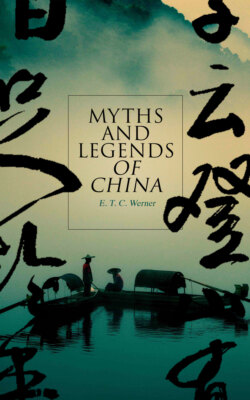Читать книгу Myths and Legends of China - E. T. C. Werner - Страница 32
На сайте Литреса книга снята с продажи.
Industrial Institutions
ОглавлениеWhile the men attended to farm-work, women took care of the mulberry-orchards and silkworms, and did spinning, weaving, and embroidery. This, the primitive division of labour, held throughout, though added to on both sides, so that eventually the men did most of the agriculture, arts, production, distribution, fighting, etc., and the women, besides the duties above named and some field-labour, mended old clothes, drilled and sharpened needles, pasted tin-foil, made shoes, and gathered and sorted the leaves of the tea-plant. In course of time trades became highly specialized—their number being legion—and localized, bankers, for instance, congregating in Shansi, carpenters in Chi Chou, and porcelain-manufacturers in Jao Chou, in Kiangsi.
As to land, it became at an early age the property of the sovereign, who farmed it out to his relatives or favourites. It was arranged on the ching, or 'well' system—eight private squares round a ninth public square cultivated by the eight farmer families in common for the benefit of the State. From the beginning to the end of the Monarchical Period tenure continued to be of the Crown, land being unallodial, and mostly held in clans or families, and not entailed, the conditions of tenure being payment of an annual tax, a fee for alienation, and money compensation for personal services to the Government, generally incorporated into the direct tax as scutage. Slavery, unknown in the earliest times, existed as a recognized institution during the whole of the Monarchical Period.
Production was chiefly confined to human and animal labour, machinery being only now in use on a large scale. Internal distribution was carried on from numerous centres and at fairs, shops, markets, etc. With few exceptions, the great trade-routes by land and sea have remained the same during the last two thousand years. Foreign trade was with Western Asia, Greece, Rome, Carthage, Arabia, etc., and from the seventeenth century A.D. more generally with European countries. The usual primitive means of conveyance, such as human beings, animals, carts, boats, etc., were partly displaced by steam-vessels from 1861 onward.
Exchange was effected by barter, cowries of different values being the prototype of coins, which were cast in greater or less quantity under each reign. But until within recent years there was only one coin, the copper cash, in use, bullion and paper notes being the other media of exchange. Silver Mexican dollars and subsidiary coins came into use with the advent of foreign commerce. Weights and measures (which generally decreased from north to south), officially arranged partly on the decimal system, were discarded by the people in ordinary commercial transactions for the more convenient duodecimal subdivision.
